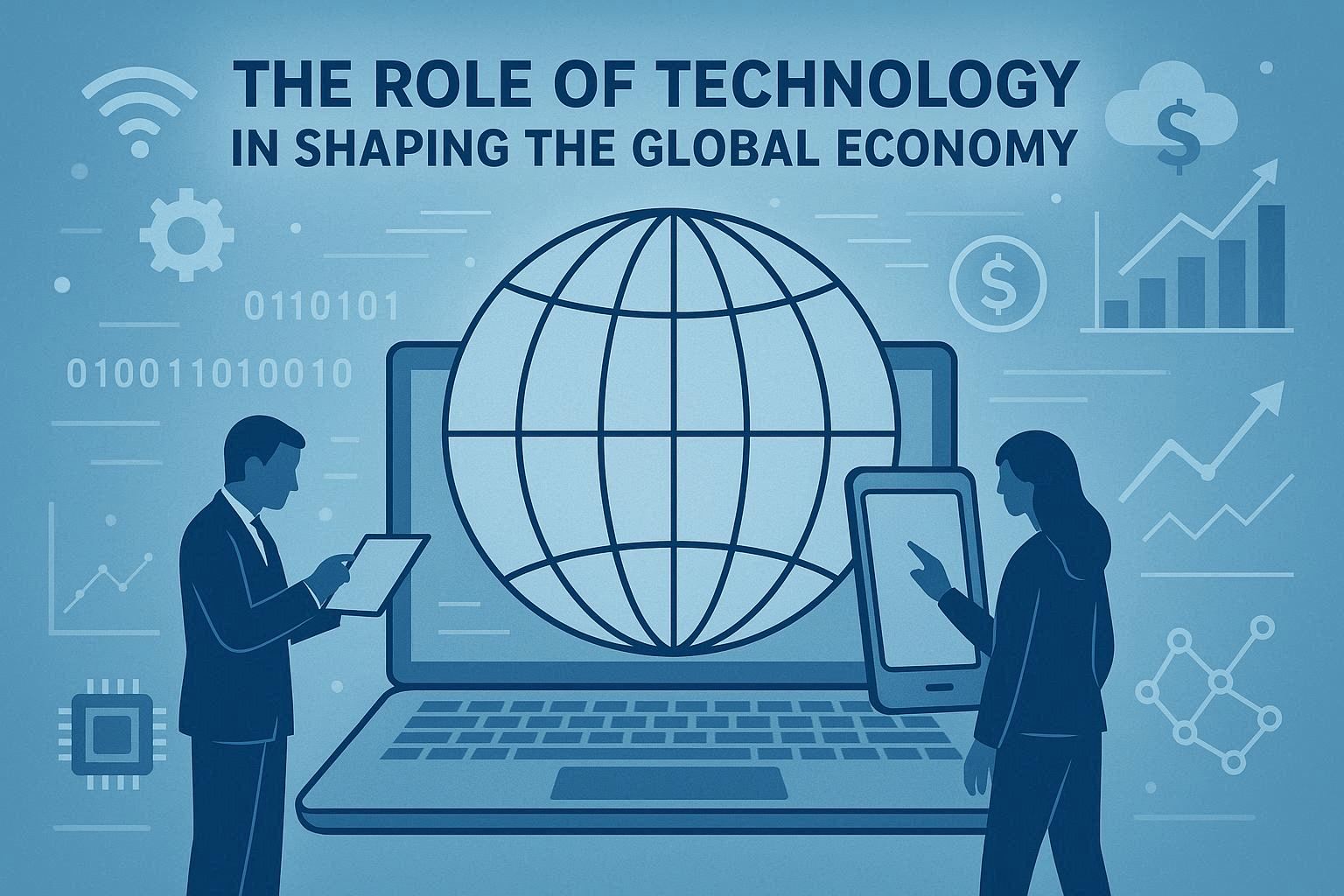Technology has always been a powerful driver of economic growth, from the Industrial Revolution to the rise of the internet. In 2025, technological innovation continues to reshape the global economy at an unprecedented pace. Artificial intelligence (AI), blockchain, automation, and digital finance are not just transforming industries but also redefining how nations compete, how businesses operate, and how individuals earn a living.
This article explores the role of technology in shaping the global economy, its benefits, challenges, and what the future might hold as we enter a new era of digital transformation.
1. The Connection Between Technology and Economics
Economics studies how resources are produced, distributed, and consumed. Technology influences every part of this process. It improves productivity, reduces costs, creates new industries, and changes the way people interact with markets. In 2025, digital technology has become a backbone of economic resilience, allowing countries and businesses to adapt to rapid change.
2. Key Technologies Driving Economic Change
2.1 Artificial Intelligence (AI) – AI is revolutionizing industries by automating tasks, analyzing big data, and enabling smarter decision-making. Economists predict AI could boost global GDP by trillions of dollars in the next decade.
2.2 Automation and Robotics – From manufacturing to logistics, automation reduces labor costs and increases efficiency. However, it also raises concerns about job displacement in traditional sectors.
2.3 Blockchain and Digital Currencies – Blockchain ensures transparency and security in financial transactions, while cryptocurrencies and central bank digital currencies (CBDCs) are reshaping monetary policy and cross-border trade.
2.4 Internet of Things (IoT) – Smart devices and connected systems improve supply chain management, healthcare, and urban planning, making economies more efficient.
2.5 Renewable Energy Technology – Advances in solar, wind, and battery storage are reducing dependency on fossil fuels, supporting sustainable economic growth.
3. Positive Economic Impacts of Technology
3.1 Productivity Growth – Technology enables businesses to produce more with fewer resources, boosting overall economic output.
3.2 New Market Creation – Innovations like e-commerce, digital banking, and remote work platforms create new industries and job opportunities.
3.3 Global Connectivity – Digital platforms allow even small businesses to reach international markets, expanding trade opportunities.
3.4 Financial Inclusion – Mobile banking and digital wallets provide financial services to millions in developing countries who previously lacked access to banking.
3.5 Sustainability – Technology supports eco-friendly practices, from energy-efficient buildings to electric vehicles, helping economies transition toward greener growth.
4. Challenges of Technology in the Global Economy
4.1 Job Displacement – While technology creates new roles, it also eliminates traditional jobs, especially in manufacturing, retail, and transportation.
4.2 Inequality – Access to technology is uneven, creating a “digital divide” between developed and developing countries, as well as between wealthy and poor populations.
4.3 Cybersecurity Risks – As economies become more digital, the risk of cyberattacks increases, threatening financial stability and national security.
4.4 Regulatory Challenges – Governments struggle to keep up with regulating digital currencies, AI ethics, and online privacy while fostering innovation.
4.5 Market Concentration – A small number of tech giants dominate digital markets, raising concerns about competition and monopolistic practices.
5. Technology and Global Trade
Technology is reshaping global trade by digitizing supply chains, automating customs processes, and enabling blockchain-based contracts. Cross-border e-commerce platforms allow businesses in developing nations to reach global consumers directly, while digital finance speeds up payments and reduces transaction costs. These changes are making global trade faster, cheaper, and more inclusive.
6. Technology and the Labor Market
6.1 Remote Work – Digital tools have made remote and hybrid work models mainstream, changing the dynamics of labor markets and reducing geographic barriers to employment.
6.2 Gig Economy – Platforms like freelancing apps and digital marketplaces create flexible income opportunities but raise concerns about job security and benefits.
6.3 Skill Shifts – Workers now require digital, analytical, and creative skills to remain competitive. Lifelong learning and reskilling have become essential for economic participation.
7. Policy Responses to Technological Change
7.1 Investment in Education – Governments must prioritize digital literacy and skill development to prepare workers for new industries.
7.2 Infrastructure Development – Expanding access to high-speed internet and digital tools ensures equitable participation in the digital economy.
7.3 Regulation of Digital Markets – Policies are needed to prevent monopolies, ensure data privacy, and promote fair competition in digital spaces.
7.4 Support for Innovation – Encouraging startups, funding research, and supporting small businesses help diversify technological growth across economies.
7.5 Social Safety Nets – Governments may need to expand unemployment benefits, universal basic income (UBI), or retraining programs to support workers affected by automation.
8. The Future of Technology and Economics
Looking ahead, technology will continue to drive global economic growth, but its benefits and risks will depend on how societies adapt. By 2030, economists expect AI and automation to dominate production, digital finance to become mainstream, and green technology to accelerate sustainable development.
The challenge will be ensuring that these benefits are shared fairly across nations and populations, preventing a deeper divide between those who adapt quickly and those left behind.
Conclusion
Technology in 2025 is not just an economic tool—it is the foundation of a new global order. From boosting productivity and creating new industries to reshaping trade and labor markets, its influence is undeniable. At the same time, it introduces challenges such as inequality, job displacement, and cybersecurity risks that require thoughtful responses from governments, businesses, and individuals alike.
As we move forward, the key lies in balancing innovation with inclusivity. By investing in education, expanding digital infrastructure, and promoting fair competition, the global economy can harness the full potential of technology to build a future that is prosperous, sustainable, and equitable for all.

